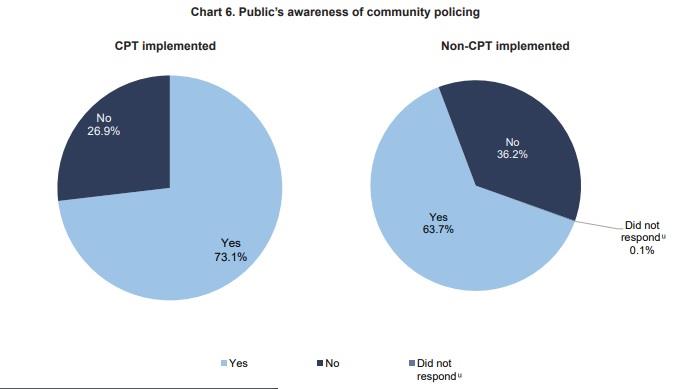More than 55% of the respondents of an NSO survey expressed a positive or very positive opinion about the police force, with 35.8% not having an opinion about the matter and 8.7% expressive a negative or very negative opinion.
This is the result of a survey carried out in May and June of last year by the National Statistics Office in collaboration with the Malta Police Force (MPF), the results of which were published today.
The survey was carried out among 1,553 individuals aged 18 and over who live in private households.
General opinion and trust
One question focused on general views of the MPF. 55.3 per cent of the population had a positive/very positive opinion and 8.7 per cent had a negative/very negative opinion. 35.8 per cent expressed neither one nor the other (Chart 1).

The majority of the population (90.0 per cent) have trust in the MPF, with varying levels. 44.9 per cent had a high level of trust, another 45.1 per cent expressed a moderate level, while 9.7 per cent trusted the police slightly or not at all.
Table 1 shows the breakdown regarding this theme.
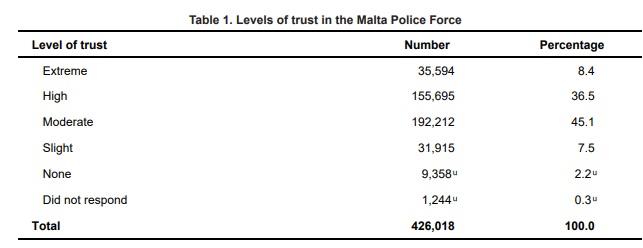
Respondents gave reasons justifying their trust in the police. 48.9 per cent of those trusting the MPF (very or extremely) perceived the police as acting with fairness, dignity and respect. 40.2 per cent said that their presence is felt, while 31.5 per cent said that the police acted when called. Respondents who do not fully trust the police also gave their reasons. 27.6 per cent of this group said that the police are never around, 24.5 per cent said that the police do not act with fairness, dignity and respect, and 19.4 per cent said that the police failed to act or respond when called. Respondents could have chosen more than one attribute to their trust or mistrust.
The full set of reasons given can be followed in Charts 2 and 3 below.
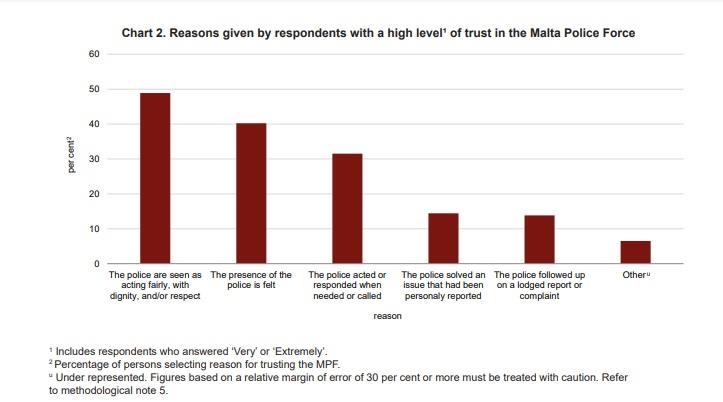

Specific characteristics Respondents were asked about their perceptions of the MPF on specific characteristics ranging from integrity to impartiality. 59.6 per cent perceived the MPF to have a high level of integrity against 27.1 per cent who neither agreed nor disagreed with this proposition. 68.5 per cent saw them as providing a professional level of service and 54.1 per cent as impartial enforcers of the law. Those who neither agreed nor disagreed with the professionalism of the MPF made up 22.0 per cent and those who neither agreed nor disagreed with the impartiality of the MPF accounted for 30.0 per cent.
The questions on perceptions of specific characteristics are elaborated in Chart 4.
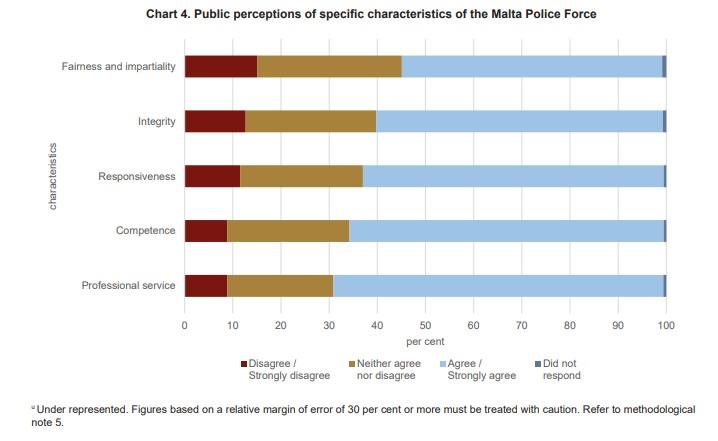
Experiences involving the Malta Police Force
Nearly one third of the population (32.7 per cent) had some type of contact with the MPF during the 12 months preceding the survey. Contact was defined as lodging a report, being involved in an accident, being questioned, being stopped during a police inspection, issued a fine by a police officer, and others. Two thirds rated their experience as good or very good, while 18.2 per cent rated it as bad or very bad. 14.8 per cent rated their experience had been neither good nor bad.
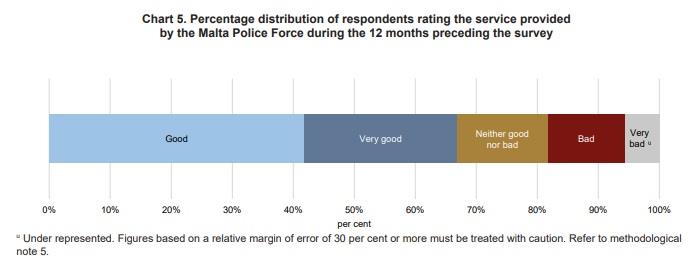
Type of service
Respondents were asked about the type of service they would prefer to see an increase in, given a choice. 79.5 per cent would prefer more visibility of police officers on the road and 18.0 per cent were in favour of access to a nearer police station (Table 2).

Image of the Malta Police Force
Just over half of the respondents (53.2 per cent) said that they do not follow the MPF on social media. 30.3 per cent observed that the MPF had undergone a good or very good level of modernisation in its public image and operations during the year preceding the survey. But the biggest segment - 48.6 per cent - thought that modernisation in these two aspects had been moderate. The breakdown regarding this aspect is given in Table 3.

Community Policing Teams
Community Policing is built on the concept of community building and problem solving. The Malta Police Force is investing in the creation of Community Policing Teams in many localities, with the objective of rendering visible and effective service by training and deploying more community-oriented police officers. Over two-thirds of the population were aware of Community Policing Teams (CPT), although extent of this awareness varied according to the regions where community policing is implemented and the regions where it has not been rolled out yet. Chart 6 shows that residents in CPT-implemented regions are significantly more aware of community policing - by 9.4 percentage points - than residents living in regions without this system.
